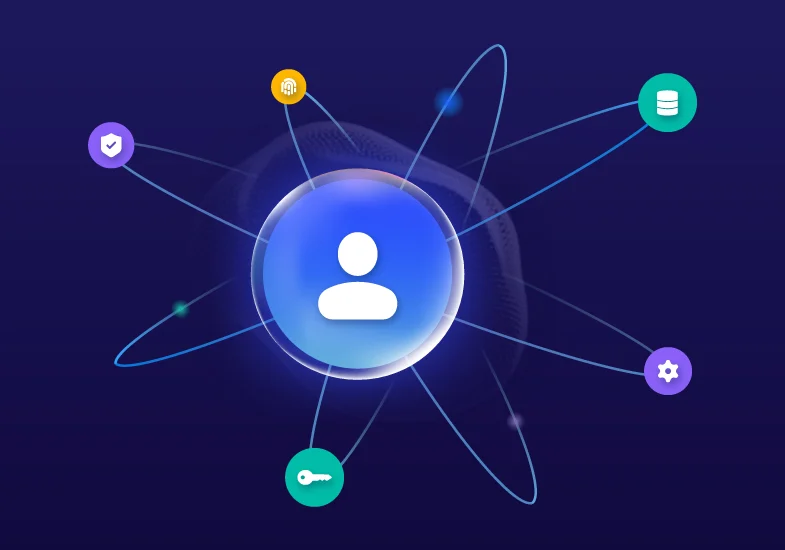
Related Post
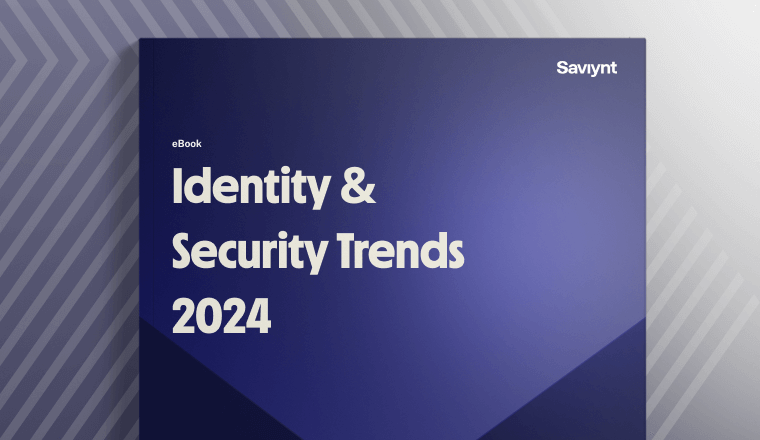
Report
2024 Identity and Security Trends
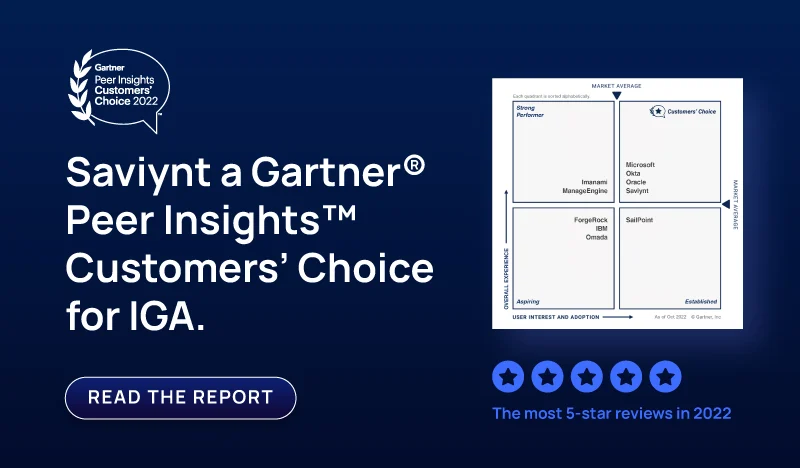
Report
Saviynt a Gartner Peer® Insights Customers Choice for IGA
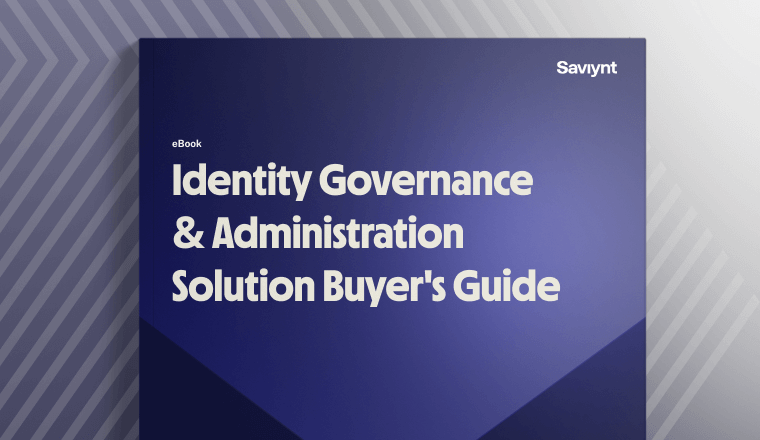
Solution Guide
IGA Buyer's Guide
-1.png)
Solution Guide
PAM Buyers Guide
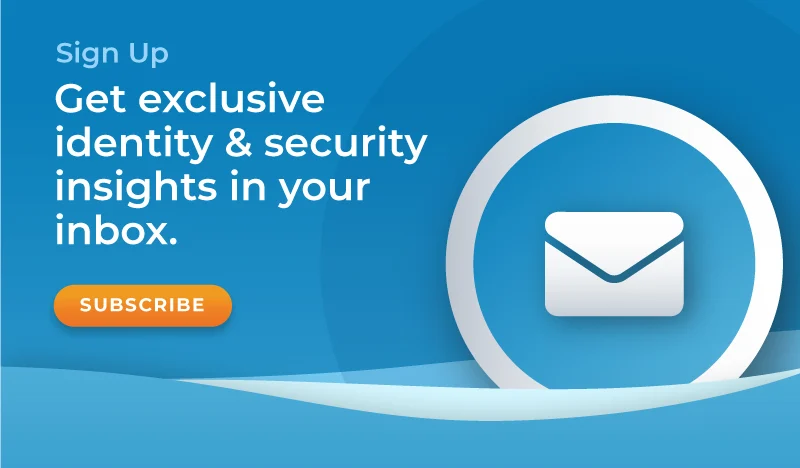
Whitepaper
Use our partner finder to discover your perfect business match.
Tune in for expert-led live demos on how Saviynt’s identity security solutions transform your digital security with actionable insights and best practices.

Third parties and SaaS-based solutions have become an integral part of business ecosystems. Effective governance of them, however, is another story.
Organizations take on enormous risk every time they provision access to a third party. Even though these external identities need the same access as internal ones, they’re managed by two disparate processes. The traditional approach requires HR (or an individual business unit) to manage third-party relationships — often with (gasp!) spreadsheets. Legacy IGA vendors ignore this critical component and don’t include any features to mitigate the danger. But whether or not you measure or mitigate it — if you don’t manage it correctly, you’re exposing your organization to significant consequences.
So, does this mean you need to add yet another point solution? No you don’t.
In this series, we’ll look at how Saviynt’s Enterprise identity Cloud (EIC) covers all the bases with one converged platform. As companies in almost every industry increase their reliance on non-humans (and non-employees), EIC can onboard at scale, delegate administration, streamline succession management, enable a clear chain of user governance, and simplify access termination — all through one pane of glass.
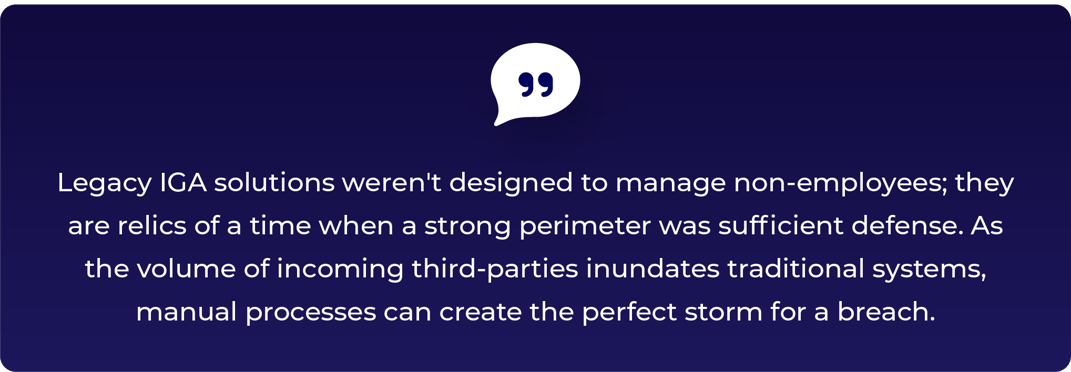
When 68.9 million American workers left their jobs in 2021, line-of-business executives turned to third-party vendors for specialized skills. While they on-ramped quickly, these non-employees also added or reduced resources and sidestepped security protocols with equal speed. Identity and Access Management (IAM) teams were left to figure out how to provide system and data access to an exponential number of onsite and remote identities such as supply chains, contractors, vendors, partners, affiliates — as well as bots, RPA, and IoT devices.
The rub, of course, is that legacy IGA solutions weren’t designed to manage non-employees; they are relics of a time when a strong perimeter was sufficient defense. It was assumed that the department owning the relationship to the third party would take care of it manually. But as the volume of incoming third-parties inundates traditional systems, manual processes can’t keep up. And if you’re over-provisioning and abandoning least privilege, you’re creating the perfect storm for hackers to exploit a lot of data with little effort.
In the last year, almost half of all breaches began with third party access. Across industries, high-profile cautionary tales have emerged from Morgan Stanley to Upstox to Toyota. These incidents jeopardized the private data of millions, halted business operations, and exacted real reputational damage. Regulators and auditors are now starting to pay close attention to how companies handle third-party access non-compliance.
The fact is, third-party user information is difficult to collect: 61% of companies don’t have a comprehensive inventory of their third-party relationships. It can take hundreds of hours to determine which employees and third-party users are valid, if duplicates exist, and to migrate workforce records from various organization systems.
And the disjointed solutions of the past leave identity teams scrambling to manage hybrid solutions with a combination of HR systems, manual processes — and a lot of inconsistent and unvalidated information.

As more and more companies rely on these relationships, they need better tools to help them stay ahead of emerging security and compliance risks. The era of using spreadsheets to manage third-party relationships has passed. The modern workforce requires an efficient and automated way to onboard employees, create an audit trail of what was done and who approved it, and to manage all relationships across their lifecycles.
Not sure how it works? Let’s look at how quick and secure onboarding hundreds of users can be.
When it comes to onboarding third-party organizations and their workers, consistent data is the name of the game. A converged IGA and TPAG solution should include onboarding and management features that save time, minimize manual errors and maintain data integrity.
Lifecycle rules: If you want a line-of-business or risk management executive to approve new additions, business approval rules will help to ensure you’re meeting specific business requirements while providing the least privileges necessary for the specific organization.
You can also organize third parties through a customized hierarchy, providing different partners with different rules for each
User experience: Above all, it should be easy to request access and to provide the required details. Personalized invitations and self-service user onboarding can significantly boost end-user productivity and decrease administrator workloads. If you need greater identity proof for sensitive roles and access, registration can be tied to the validation framework and even integrated to an identity proofing solution.
User registration: To stay compliant, organizations must have a way to ensure that they have all of the critical data on a user in a consistent format for clear access reviews and future certifications. Invitation-based user registration and birthright provisioning of accounts can accelerate onboarding to create an auditable documentation trail of what was done and who approved it.
Multiple gateways: Companies also need the freedom to add organizations through multiple gateways, whether via user interface, API, or bulk upload. Personalized registration forms and a validation framework reduce manual entry errors, save time, and get consistent data on every organization.
Cross-platform integration: An effective solution should integrate with many of the leading system of record (SOR) solutions for non-employee user identities and many of the leading IDaaS solutions used for federation.
Access provisioning: It’s critical to assign the right amount of risk-aware access to the individual user. Just because a user is a member of a group doesn’t mean that they should all have the same access. Automating access provisioning, requests, and risk-based approvals — along with other Joiner, Mover and Leaver processes — simplifies management of the identity lifecycle.
Monitoring: With the ability to record trends over time in dashboards, IAM teams can identify particular areas that need attention, like a specific application with a large number of alerts, or a specific third-party organization that may not be administering their users appropriately.
Let’s take a look at how Saviynt delivers these features so you can get third parties quickly and securely identified, vetted, and onboarded:
The bottom line: organizations don’t need yet another point solution. They need one end-to-end platform that can manage all identities: internal employees, external users, IoT devices and bots.
Saviynt’s IGA and TPAG gives organizations a modern, all-in-one solution with a single code base, not a bunch of stitched-together solutions from multiple companies. Enterprise Identity Cloud (EIC) wraps third-party governance into a modern, cloud-based IGA solution that simplifies the tech and security stack. It also effectively streamlines and consolidates internal and external identity management across on-premises, hybrid, and cloud.
Whether you’re spending too much time provisioning users, find it too complex or time-consuming, or are running into compliance problems during audits, Saviynt EIC can make identity lifecycle governance more efficient, well-documented, and simple. Download the IGA + TPAG Solution Guide to learn more.
In the next installment, we’ll take a closer look at why traditional IGA can’t solve today’s third-party lifecycle challenges.

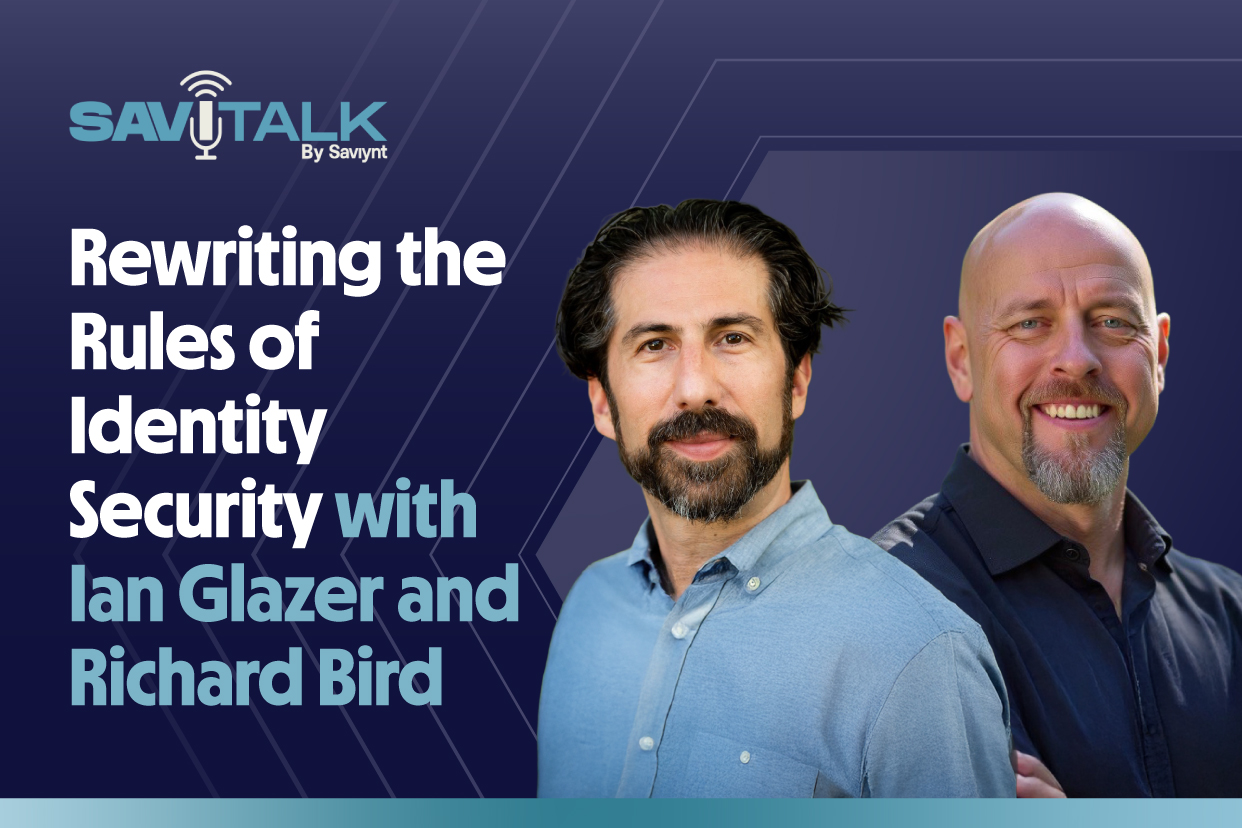
07 / 04 / 2025


Report

Report

Solution Guide
-1.png)
Solution Guide

Whitepaper